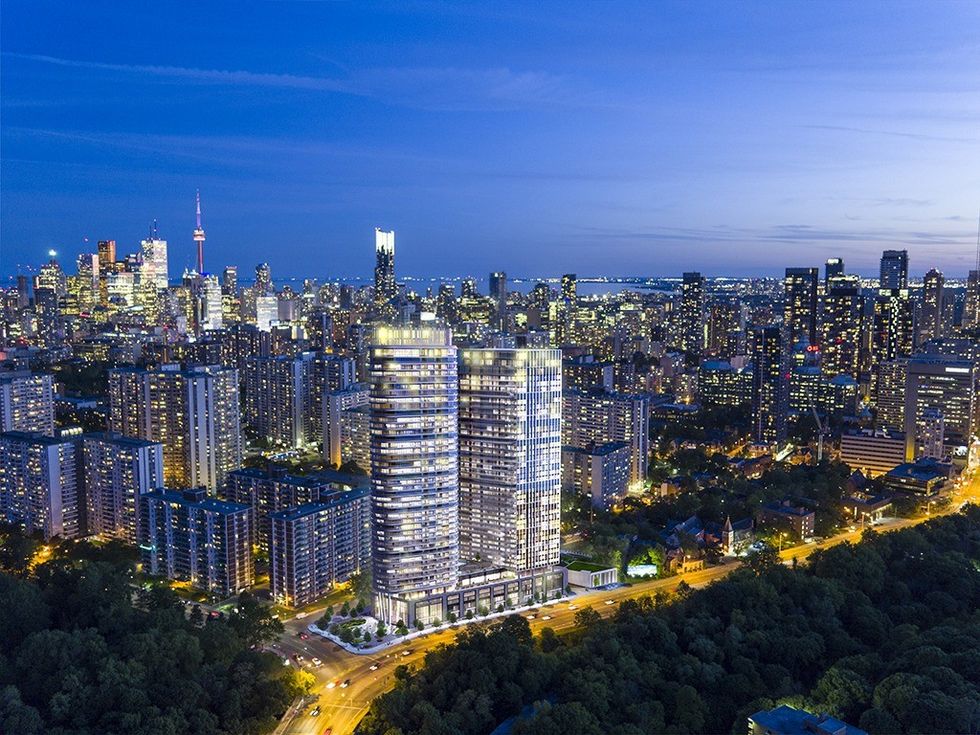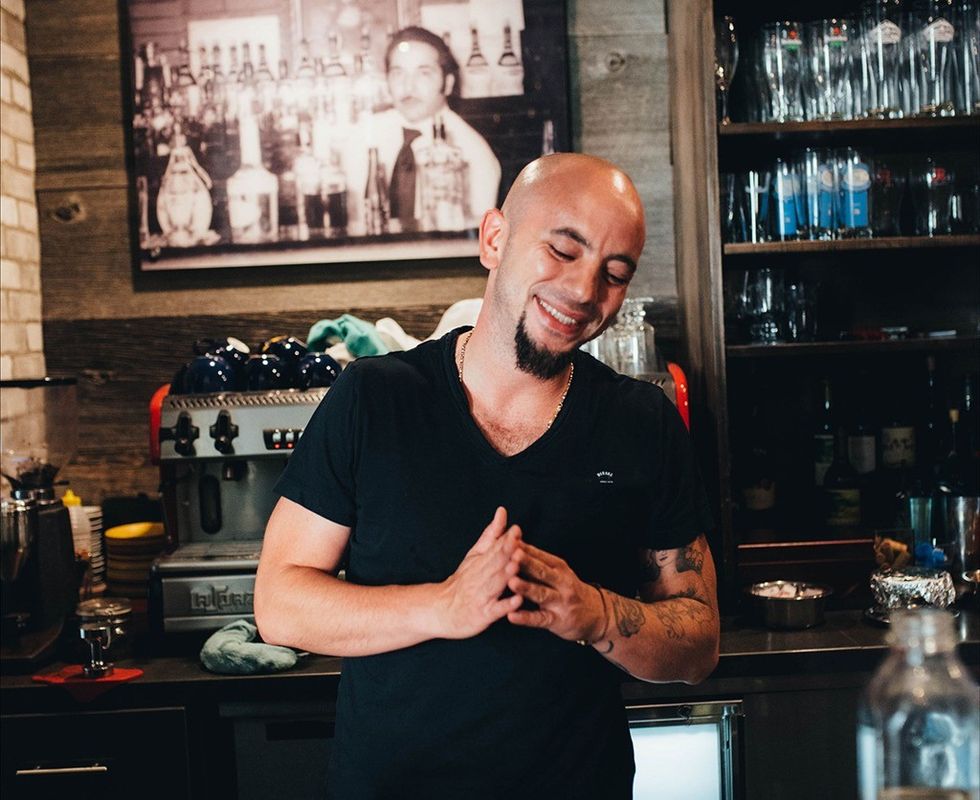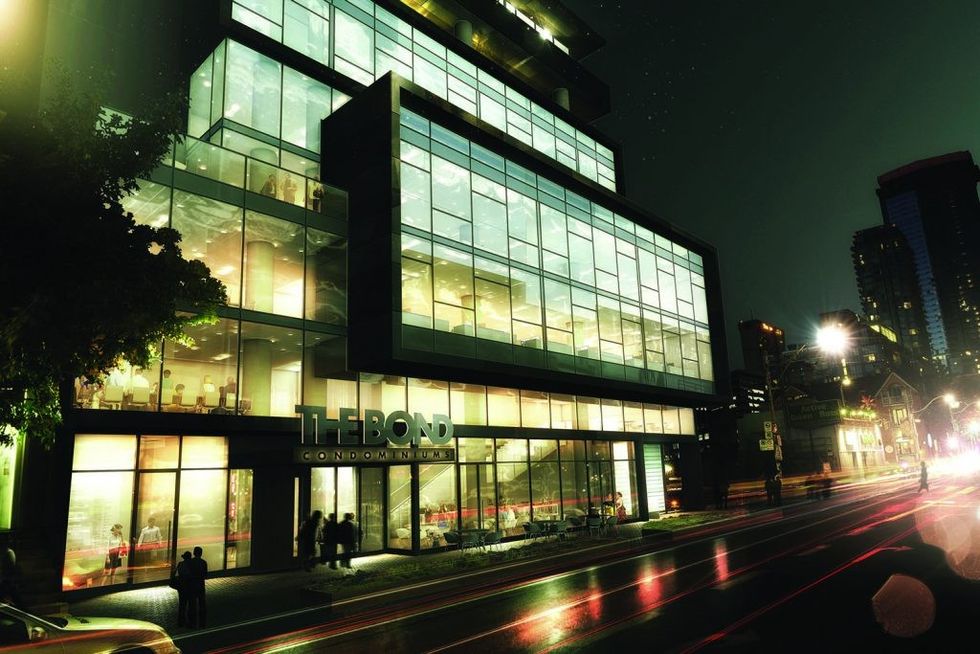
With the condo market soaring — literally and figuratively — into Toronto’s glittering skyline, the countless towers and cranes and requisite billboards and sales offices can almost turn into white noise.
While it’s good news for buyers and investors who benefit from robust competition in this housing segment, it also presents a challenge for developers: how to be heard above the near-constant commotion of condo activity.
“There’s no doubt that the condominium lifestyle is very popular for many different reasons,” says Jim Ritchie, executive vice-president, sales and marketing, at Tridel. “Suffice to say, there are condo opportunities everywhere.”

#ViaBloor
Advertising and social media campaigns have to climb higher to stay on top, or dig deeper to leave impressions in buyers’ minds. Tridel’s new development coming to Bloor and Parliament streets, Via Bloor, has launched just such a campaign — wrapping at the end of February — that invites the city to take a peek into the neighbourhood of Bloor East. The campaign was the brainchild of The Brand Factory, an award-winning brand consultancy and creative agency.
Using the hashtag #ViaBloor on Instagram and Facebook, prospective buyers can virtually walk the streets, see the sights and sounds, shops and cafes, and meet the friendly faces of the community.
“It’s really about the perspective of the people that live, work and visit that neighbourhood, where (Tridel’s) new community is going to be,” Ritchie says of the visual journey, told through photos and interviews that can be clicked, shared and liked.
“What we build is a large part of the culture and success of that neighbourhood, so we’re interacting with the neighbourhood even in advance of going to the marketplace.”

Aspirational advertising campaigns are ubiquitous — think of the handsome, upscale hipsters laughing on sun-spattered patios, or models gliding across a starlit terrace — but the Via Bloor initiative aims instead for street-level experiences and real-life stories.
“Sometimes the flashy brochures don’t really relate to people that make up that neighbourhood,” Ritchie says. “This is just a different way to engage a consumer with our product line — and a fun way to do it, frankly.”

The Bond
Jeremy Gladstone, principal of Gladstone Media, recently helmed a campaign that also dropped prospective buyers and investors right into the “frenetic energy” of a particularly hot community, the Entertainment District.
Lifetime Development’s condominium at John and Adelaide, The Bond, rolled out a series of innovative — and immensely successful — initiatives, including crowd-sourced photos for their advertising materials, a contest for local artists to help design an ad and video collections that captured the dazzling diversity of the area.
The videos featured profiles and interviews of entertainment elites, hospitality CEOs, restaurant and shop owners, among other colourful characters, each weighing in on what the community meant to them.
“We’re in this reality television age right now where testimonials from real people will go a lot further than telling them something with a bold headline in (a condo magazine),” Gladstone says, noting the videos received thousands of hits.
“So having actual stakeholders in the neighbourhood educating our prospective buyers was a great way of relaying the information — and it didn’t feel salesy, because it was genuine.”
The Instagram campaign — where Torontonians were invited to submit their images and experiences within the Entertainment District — received thousands of entries, Gladstone says, and this user-generated content was a two-for-one success.
“Not only did we get the engagement of the community, the engagement of potential condo purchasers, but we also had them populate a lot of the photographs used in our campaign,” he says. “It almost felt like an art-directed Instagram feed, as opposed to an overly polished photographer’s image. It’s a little more grassroots and I think that resonates with people.”
The campaign also resonated with the Building Industry and Land Development Association (BILD), which gave top honours to Gladstone Media in the category of Best Social Media campaign for the project at its annual awards gala.
Modern audiences are sophisticated, buyers are discerning and competition is fierce, Gladstone says. “I think the general public, and the condo-buying public, are much more savvy than they were 20 years ago.”
“I think for a developer to stand out in this day and age,” he continues, “they have to have great product and be true to their brand, pushing the envelope and staying cutting edge — or you’re going to get left behind.”
Lifetime Developments
As vice-president of Lifetime Developments, which produced The Bond, Brian Brown says the advertising campaign was synonymous with the Lifetime brand — a developer that prides itself on community engagement.
“We were able to differentiate ourselves with a campaign that grabbed people’s attention, and also their involvement,” he says. “We want to engage the neighbourhood and not just have pretty pictures and paid advertising to get the message out.”
The condo launch was “hugely successful,” Brown says, and more than 80 per cent sold within a few months. It was such a hot ticket that Lifetime went back to the city and negotiated two extra storeys on the structure — a reason to launch a new phase of their marketing blitz.

“In that seven-week campaign, we introduced the videos on our website and social media channels and they were widely viewed,” he says. “Within that period of time, we sold more than 50 units. It was very successful. In fact, today I’m told we’re signing the very last unit in the building.”
Brown acknowledges that the Toronto real estate market — and the condo segment within it — shows no signs of slowing down. “There’s a new condo launch almost every month,” he says.
“With the latest developments, investments and growth, we’ve really seen a strong statement on who Toronto is,” he continues. “It’s really come forward as a leading city. If that capital investment didn’t come to these neighbourhoods, then we wouldn’t be able to attract the best restaurants, the best theatres, the best entertainment venues.”
That heat, in turn, has created “a different reality” for engaging with the community and the public at large, Brown says.
“It used to be: we open up a sales office and we put in a full-page ad in the Toronto Star,” he says. “Now we have to recognize that social media is a huge, huge expression of a campaign. And through social media, it’s more of a two-way conversation.”





















